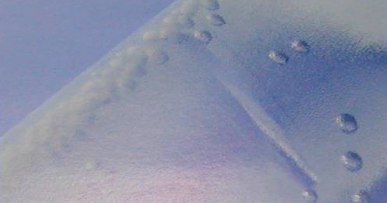Email format error
Email cannot be empty
Email already exists
6-20 characters(letters plus numbers only)
The password is inconsistent
Email format error
Email cannot be empty
Email does not exist
6-20 characters(letters plus numbers only)
The password is inconsistent

Offer Technical Support and Customized Solutions
The company is committed to creating new and improved plastic materials to meet the evolving demands of the market.

Analysis and Solutions for Bubbles and Vacuum Bubbles in Plastic Products
Introduction:
In the manufacturing process of plastic products, the occurrence of bubbles or vacuum bubbles can lead to defects such as insufficient filling and uneven surfaces. This blog will explore the causes of these defects and provide effective solutions.
-
Mold Defects:
Improper gate placement, oversized gate cross-section, long and narrow runners in the mold, gas traps in the runners, or poor mold venting can all contribute to the formation of bubbles or vacuum bubbles. It is important to adjust the mold structure, especially by positioning the gate at the thick-walled part of the plastic component, according to the specific situation. -
Improper Process Conditions:
Many process parameters directly affect the occurrence of bubbles and vacuum bubbles. Low injection pressure, excessive injection speed, short injection time and cycle, excessive or inadequate material feeding, insufficient packing pressure, uneven or insufficient cooling, and improper temperature control of the material and mold can all lead to the formation of bubbles in plastic products. To prevent these defects, it is necessary to adjust the injection speed, optimize the injection and packing time, improve cooling conditions, and control the material feeding. When controlling the mold and melt temperatures, it is important to ensure that the temperatures are not too high, as this can cause plastic degradation, excessive gas formation, or excessive shrinkage leading to bubbles or voids. On the other hand, if the temperatures are too low, inadequate material packing and the formation of vacuum bubbles can occur. Generally, a slightly lower melt temperature and a slightly higher mold temperature can help minimize the generation of excessive gas and voids.
- Unsuitable Raw Materials: Plastic raw materials with excessive moisture or volatile content, uneven pellet size, high shrinkage rate, excessively high or low melt flow index, or high percentage of recycled materials can all affect the occurrence of bubbles and vacuum bubbles in plastic products. To address this issue, it is recommended to use pre-dried raw materials, screen the pellets, replace the resin, and reduce the amount of recycled materials, among other methods.
Conclusion:
To ensure high-quality plastic products, it is important to analyze and address the causes of bubbles and vacuum bubbles. Proper adjustment of mold structure, optimization of process conditions, and careful selection of raw materials can effectively minimize these defects. By implementing the suggested solutions, manufacturers can improve product quality and customer satisfaction.
https://www.toponew.com/products/gpps-compound

